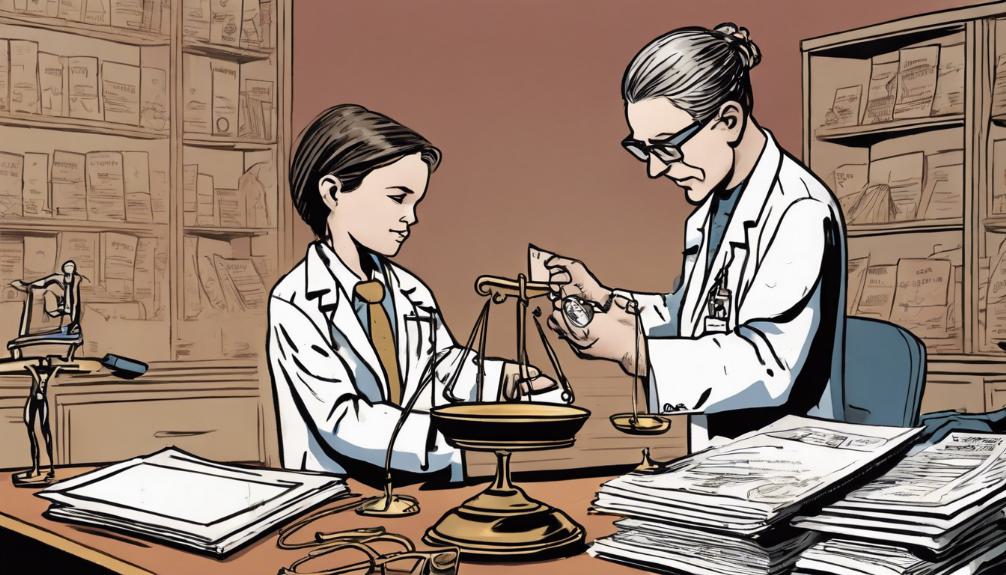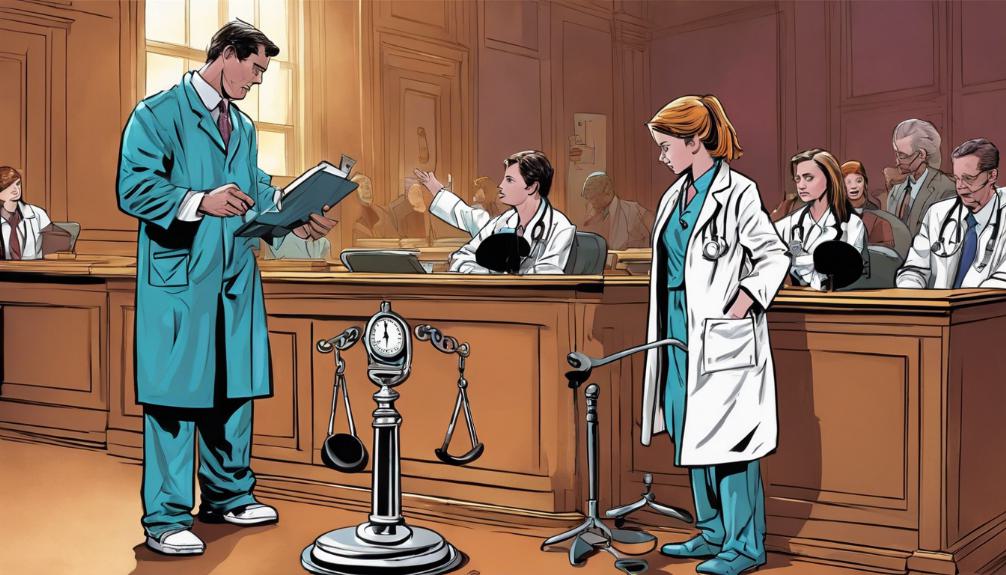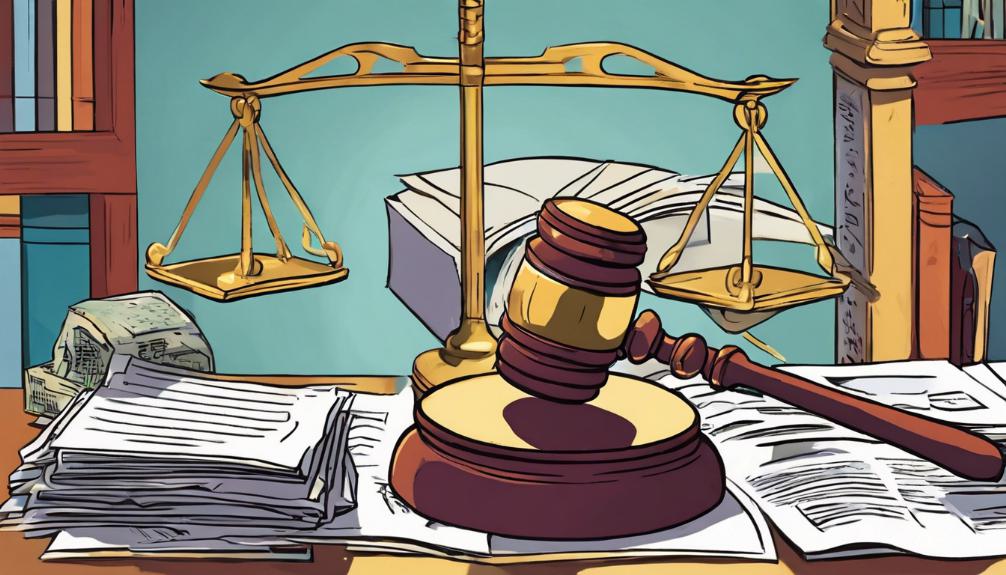Ataxic Cerebral Palsy Lawsuit Case: Has Your Child Suffered From Ataxic Cerebral Palsy?
The topic of ataxic cerebral palsy and the associated legal battles families may face is both complex and sensitive. This form of cerebral palsy, characterized by a noticeable disruption in balance and coordination, can drastically alter a child's developmental trajectory and overall quality of life. For parents suspecting that medical negligence during childbirth or early infancy may have contributed to their child's condition, navigating the intricate process of initiating a lawsuit can seem daunting. It's crucial to understand not only the medical and legal facets of these cases but also the emotional and financial implications for the affected families. To explore the potential paths forward and the support systems available, engaging with knowledgeable professionals who can offer tailored advice becomes indispensable.

Understanding Ataxic Cerebral Palsy
Ataxic cerebral palsy, a neurological disorder affecting balance and coordination, is one of several types that can result from brain damage before, during, or shortly after birth. This specific form of cerebral palsy is characterized by a loss of muscle control which significantly impairs an individual's ability to perform tasks requiring precise movements, such as writing or tying shoelaces. Unlike other forms of cerebral palsy that may involve muscle stiffness or involuntary movements, ataxic cerebral palsy primarily disturbs balance and depth perception. This can lead to a wide range of mobility challenges, affecting an individual's gait and making tasks that require fine motor skills particularly difficult. Understanding this condition is crucial for diagnosing and developing appropriate treatment plans to improve the quality of life for affected individuals.
Common Causes and Symptoms

Identifying the common causes and symptoms of ataxic cerebral palsy plays a crucial role in early diagnosis and intervention strategies. Ataxic cerebral palsy, a less common form of cerebral palsy, primarily stems from damage to the cerebellum, the part of the brain that regulates coordination and balance. This damage can occur due to a variety of factors, including brain infections, head injuries, or lack of oxygen to the brain during birth. Symptoms often include difficulties with balance and coordination, tremors, and imprecise fine motor skills, affecting tasks such as writing or buttoning a shirt. Unsteady gait and difficulty with rapid or precise movements are also hallmark signs. Early recognition of these symptoms is vital for timely and effective management and support for affected individuals.
Identifying Medical Negligence

Understanding the underlying causes and symptoms of ataxic cerebral palsy is a critical step in recognizing instances where medical negligence may have contributed to the condition's development. Medical negligence can encompass a range of failures, including improper monitoring during labor, delayed or incorrect diagnoses, and inadequate response to fetal distress. Identifying such negligence requires a thorough review of medical records, expert testimony, and an understanding of standard care practices. When healthcare providers deviate from established protocols, resulting in harm, this constitutes negligence. Proving this link between the healthcare provider's actions or inactions and the onset of ataxic cerebral palsy is crucial. Legal professionals specializing in birth injury cases can offer invaluable assistance in navigating these complex issues.
Legal Rights and Compensation

Families affected by ataxic cerebral palsy due to medical negligence may be entitled to compensation for their losses and suffering. This compensation aims to cover a range of expenses and damages, including medical bills, ongoing care costs, loss of income, and emotional distress. Legal rights in such cases are grounded in proving that the healthcare provider failed to adhere to the standard of care required, leading to the child's condition. The process involves gathering substantial medical evidence, expert testimonies, and detailed records of the child's condition and associated costs. Families seeking justice and financial relief for their child's condition should be aware of the statute of limitations, which varies by jurisdiction, limiting the time frame to file a lawsuit.
Choosing the Right Lawyer

Selecting the appropriate legal representation is crucial for families navigating the complexities of ataxic cerebral palsy lawsuits. When choosing a lawyer, it's essential to consider their experience and track record in handling similar cases. Look for attorneys who specialize in birth injury or medical malpractice law, as they will have a deeper understanding of the medical and legal nuances involved. Additionally, evaluating their communication skills and willingness to explain the legal process in understandable terms can be a good indicator of their suitability for your case. It's also advisable to inquire about their fee structure to ensure transparency and alignment with your financial situation. Ultimately, the right lawyer should not only be adept in law but also compassionate and committed to advocating for your child's rights and well-being.
The Lawsuit Process Explained

Navigating the complexities of a lawsuit, especially for ataxic cerebral palsy cases, begins with a thorough understanding of the legal process involved. Initially, the family must consult with a specialized birth injury lawyer to review the case's specifics, focusing on potential medical negligence. This step is crucial for establishing the grounds for litigation. Following the consultation, the attorney will conduct a detailed investigation, gathering medical records, expert testimonies, and other evidence to support the claim of negligence or malpractice. The legal team will then file a lawsuit on behalf of the child and family, aiming to secure compensation for medical expenses, ongoing care, and other damages. Throughout this process, clear communication and expert legal representation are paramount to navigating the legal system effectively and advocating for the child's best interests.
Support and Resources Available

For individuals and families dealing with ataxic cerebral palsy, a variety of support services and resources are readily available to assist in navigating the complexities of the condition and its legal implications. Organizations dedicated to cerebral palsy provide comprehensive information, support groups, and guidance on managing daily challenges. Legal support is crucial for those considering litigation due to medical negligence. Many law firms specializing in birth injuries offer free consultations to evaluate potential cases. Additionally, online platforms and communities offer a space for families to share experiences and advice. It's important to utilize these resources to ensure informed decision-making and access to the best possible care and legal representation.
Frequently Asked Questions
How Does Ataxic Cerebral Palsy Affect a Child's Long-Term Educational and Vocational Opportunities?**
Ataxic cerebral palsy primarily affects a child's balance and coordination, which can significantly impact their educational and vocational opportunities long-term. Challenges in fine motor skills may hinder academic progress, especially in tasks requiring precision. Additionally, difficulties with movement and speech can affect social interactions and participation in certain activities, potentially limiting vocational choices. Supportive educational environments and tailored vocational programs are crucial to maximizing these opportunities for affected individuals.
This Question Explores the Broader Life Implications of Ataxic Cerebral Palsy Beyond Immediate Health Concerns, Focusing on How This Condition May Influence a Child's Ability to Engage in Education and Work in the Future.
Ataxic cerebral palsy significantly influences a child's educational and vocational opportunities. This condition affects coordination and balance, potentially hindering academic performance and participation in certain activities. Long-term, it may limit career choices, requiring careful consideration of physical demands and workplace accommodations. Supportive educational environments, tailored vocational training, and adaptive technologies are essential to maximize these individuals' potential, ensuring they can lead fulfilling professional lives despite their challenges.
Can Ataxic Cerebral Palsy Impact a Child's Social and Emotional Development, and How Can Families Support These Aspects?**
Ataxic cerebral palsy can significantly impact a child's social and emotional development, affecting their ability to interact with peers and manage emotions. To support their child, families should consider engaging in therapies that enhance communication and social skills, such as speech and occupational therapy. Additionally, psychological support can help address emotional challenges. Encouragement of inclusive activities and education for peers about the condition can also foster a supportive social environment.
This Question Delves Into the Social and Emotional Challenges Children With Ataxic Cerebral Palsy Might Face, Offering an Avenue for Discussing the Importance of Holistic Care and the Role Families Play in Supporting Their Child's Mental Health and Social Skills.
Children with ataxic cerebral palsy often encounter unique social and emotional challenges due to their condition. These challenges underscore the need for comprehensive care that goes beyond physical health to include mental and social wellbeing. Families play a crucial role in this aspect, providing essential support and fostering the development of social skills and emotional resilience. Addressing these needs is vital for the holistic development and quality of life of affected children.
What Are the Latest Advancements in Treatment and Therapy for Ataxic Cerebral Palsy, and Are They Covered by Insurance?**
The latest advancements in the treatment and therapy for ataxic cerebral palsy include innovative physiotherapy techniques, occupational therapies, speech therapy, and the use of technology-assisted devices. Coverage for these treatments varies by insurance provider and plan. It is essential for policyholders to review their health insurance details or consult with their insurance company to understand the extent of coverage for these advanced therapeutic interventions.

This post has been generated by AI and was not reviewed by editors. This is Not legal advice. Please consult with an attorney.




